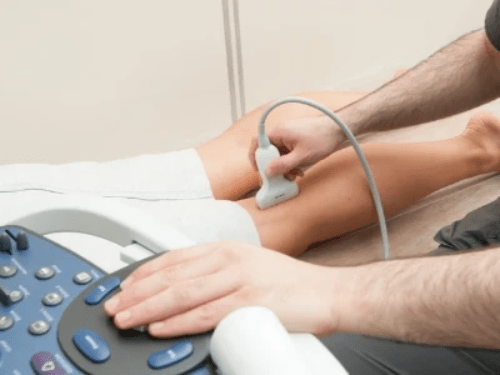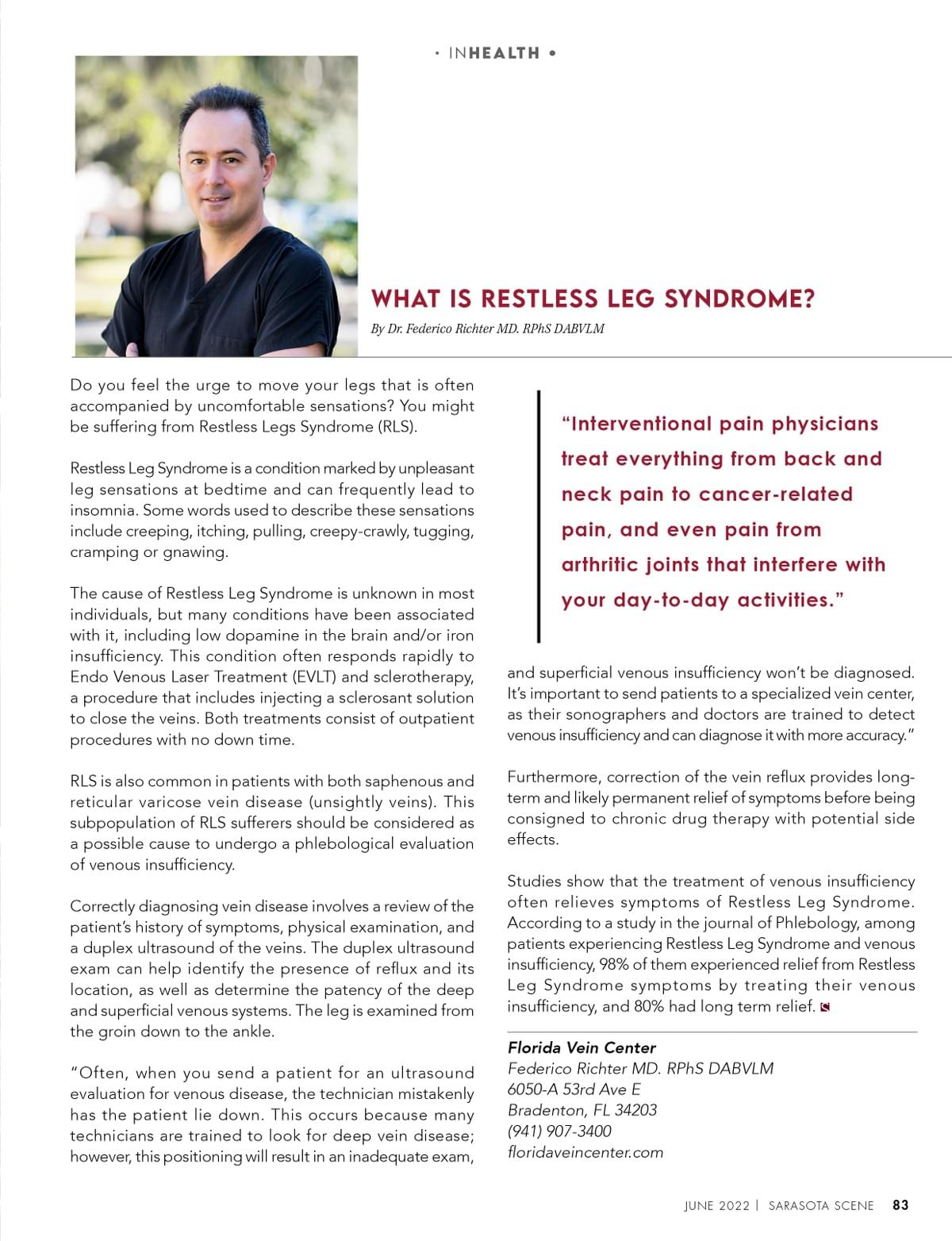
- Resources
- …
- Resources
Locations In Bradenton & Sun City
- Resources
- …
- Resources
Restless Leg Syndrome
Do your legs feel itchy, tingly, or do you always have the urge to move them?
It may be Restless Leg Syndrome (RSL).
Restless Leg Syndrome

Restless Leg Syndrome & Venous Insufficiency
Restless Leg Syndrome (RLS) and Varicose Veins have many symptoms in common:
Urge to move your legs
Itching
Tingling
Creepy-crawly feeling
Restlessness
These symptoms may be an indication of poor circulation, even though you have no visible varicose veins. RLS is common in patients with both saphenous and truncal varicose vein disease and can respond frequently and rapidly to EVLT and sclerotherapy.
Venous insufficiency can be the underlying cause of multiple other conditions, including Deep Vein Thrombosis (blood clots in your legs), lower extremity cellulitis (life-threatening skin infections), variceal bleeding, and venous ulcers, restless legs syndrome, and leg cramps just to name a few. Physicians often only check some of the obvious explanations for the leg cramps like electrolytes imbalance (potassium, calcium, and magnesium levels) neuropathy, or endocrine conditions and do not explore the possibility of venous reflux as an underlying cause.
Restless leg syndrome is a condition marked by unpleasant leg sensations at bedtime. Restless leg syndrome frequently leads to insomnia. The cause of restless leg syndrome is unknown in most individuals, but many conditions have been associated with it.
RLS is common in patients with both saphenous and reticular varicose vein disease (unsightly veins). All this subpopulation of RLS sufferers should be considered for phlebological evaluation of venous insufficiency as a possible cause.

Making a Diagnosis
Correctly diagnosing vein disease involves a review of the patient’s history of symptoms, physical examination, and duplex ultrasound of the veins. The duplex ultrasound exam can help identify the presence of reflux and its location, as well as determine the patency of the deep and superficial vein systems. The leg is examined from the groin down to the ankle.
If you think you are suffering from Restless Leg Syndrome, please request an appointment below.
Request An Appointment Today For A FREE Vein Screening.
We accept most insurances and Medicare.
Patient Testimonials
"The staff is friendly and knowledgeable...with years of wisdom and experience. Drop by and you will be so glad you did!"
Lana K
Patient Testimonials
"I recommend them because it's a great facility, the staff treats you like family, the doctor is amazing, and they truly care about their patients."
Ibeth A.
Patient Testimonials
"I had ulcers on my leg for over 4 years now. In Just weeks, Dr. Richter has healed half of them! Thank you for taking care of me!! You deserve 100 stars!"
Andrew M.
Florida Vein Center in Bradenton
5215 SR 64 East
Bradenton, FL 34208
Florida Vein Center in Sun City
720 Cortaro Drive
Sun City Center, FL 33573
© 2025 Florida Vein Center
Southwest Florida's Top-Rated Vein Treatment Clinics
*Due to legal constraints, the free vein screening offer cannot be extended to Medicare or Medicaid beneficiaries or other recipients of federal or state health care benefit programs.




